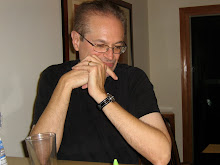Quote of the day:
"I start in the middle of a sentence and move both directions at once."
--John Coltrane, when asked to describe his style.
My third device of the year for 2007 will take some explaining.
When CDs came around in the 1980s, the common wisdom became that all CD players sounded the same. This was based on the change in technology more than it was on actual listening.
With LPs, small variations in turntable speed, tonearm/cartridge design and setup, the condition of the record surface and many other physical factors all have an obvious effect on the sound.
Because CDs were digital--essentially a surface with ones and zeros on it--none of the LPs’ physical problems came into play. So the assumption quickly became that all players sounded the same.
That’s true as long as the signal is digital. Just like any properly-operating computer hard drive will accurately store and retrieve data, any properly-operating CD player will put out an accurate digital signal.
But CD players do not stop with the digital signal. They also convert it to analog. This is where differences come into play. Analog is a more-tricky business than digital. Just like humans are more tricky than machines.
The engineering of any active analog circuit always involves decisions that affect the signal passing through it. There are two such active circuits just before the analog output from any CD player--the circuit that converts the digital signal and the circuit that amplifies the signal so that it can drive your amplifier.
The design of these two circuits affects the sound of a CD player. Well-designed high-quality circuits make a difference.
This is not just an audiophile thing. The difference in sound is quite obvious and pronounced to most people. The thing is, most people haven’t heard such well-designed high-quality circuits.
Manufacturers of CD players are very aware that most everyone thinks all players sound the same. So, to keep costs down, they put in the very cheapest converter and amplifier circuits they can--on one small chip. Not surprisingly, players designed this way sound pretty much the same.
Earlier this year Merrie and I bought a separate digital-analog converter (DAC) and plugged the CD player’s digital output into it. We also hooked up a computer’s digital output.
It’s interesting that there was so much in the music that we hadn’t heard before. It sounds live and real.
Thursday, January 3, 2008
Device of the Year Three
Subscribe to:
Post Comments (Atom)







No comments:
Post a Comment